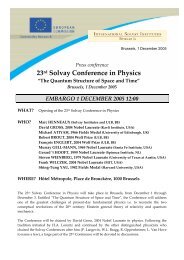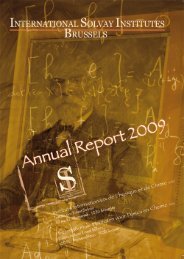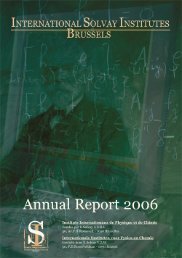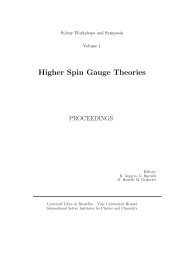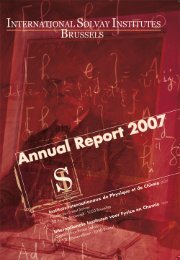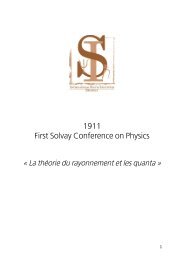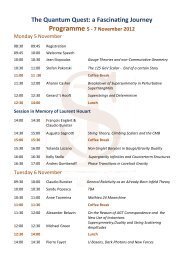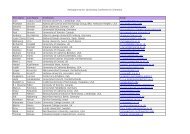Exact Results for 't Hooft Loops in Gauge Theories ... - Solvay Institutes
Exact Results for 't Hooft Loops in Gauge Theories ... - Solvay Institutes
Exact Results for 't Hooft Loops in Gauge Theories ... - Solvay Institutes
Create successful ePaper yourself
Turn your PDF publications into a flip-book with our unique Google optimized e-Paper software.
Introduction Problem Def<strong>in</strong>itions Method Solution Result<br />
When we tensor product sections with the adjo<strong>in</strong>t<br />
representation of G the <strong>in</strong>dex becomes (at t i = e iε i<br />
)<br />
<strong>in</strong>d(D)(ε 1 , ε 2 , â) =<br />
To read the R weights we expand<br />
1 + e iε 1<br />
e iε 2<br />
(1 − e iε 1 )(1 − e iε 2)<br />
= ∑<br />
(1 + e iε 1+iε 2<br />
) ∑<br />
2(1 − e iε 1 )(1 − e iε 2)<br />
n 1 ,n 2 ≥0<br />
w∈adj<br />
e iw·â . (5.2)<br />
(1 + e iε 1<br />
e iε 2<br />
)e <strong>in</strong> 1ε 1<br />
e <strong>in</strong> 2ε 2<br />
(5.3)<br />
There<strong>for</strong>e, the one-loop contribution from the pole is<br />
∏<br />
[n 1 ε 1 + n 2 ε 2 + α · â] 1/2 [(n 1 + 1)ε 1 + (n 2 + 1)ε 2 + α · â] 1/2 .<br />
n 1 ,n 2 ≥0<br />
(5.4)<br />
Vasily Pestun Localization <strong>for</strong> ’t <strong>Hooft</strong> operators on S 4 27/35




